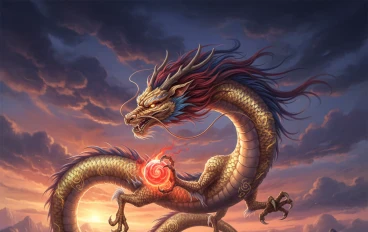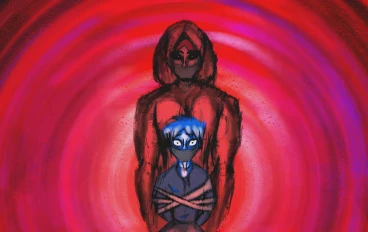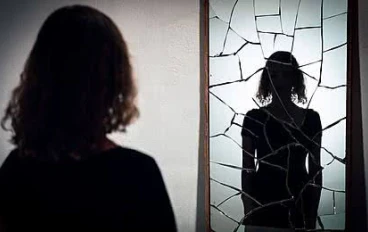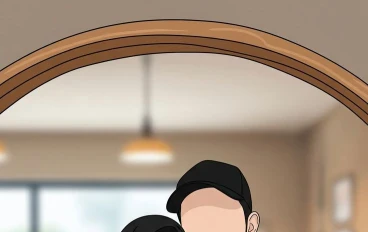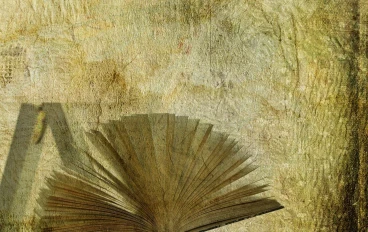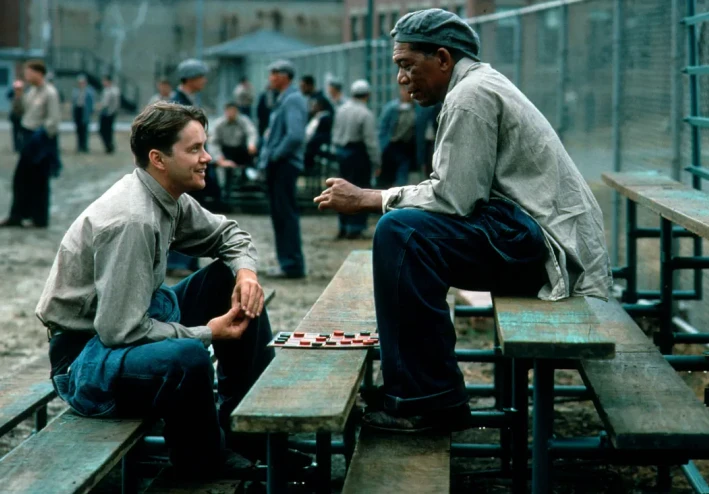
Beyond Prison Break - The Shawshank Redemption
Freedom in Minds Before Walls: A Different Reading of The Shawshank Redemption
🎬 Introduction
It’s hard to talk about the masterpieces of cinema without mentioning The Shawshank Redemption.
Directed by Frank Darabont in 1994, the film stands as one of the most powerful and inspiring stories ever told — not only because of its moving plot and brilliant performances by Tim Robbins and Morgan Freeman, but because it offers a deep reflection on freedom, hope, and human dignity.
Most viewers see it as a story of prison escape, but in truth, it’s far more than that. The real message lies in the idea that freedom doesn’t start outside the walls — it begins inside the mind.
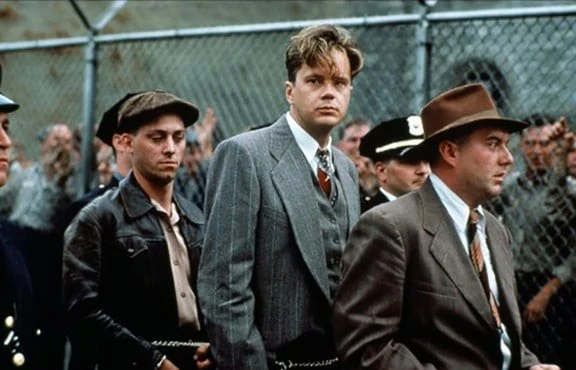
🧱 The Real Prison Is Not Made of Walls
When Andy Dufresne enters Shawshank Prison after being wrongfully accused of murdering his wife, we’re introduced to a world of cruelty, corruption, and despair.
The inmates have long lost hope, accepting the prison as their only reality — even their home.
But Andy was different. He refused to let the walls define his limits.
While others counted the days, he built small pieces of a dream — quietly, patiently, and purposefully.
The difference between Andy and the rest wasn’t intelligence — it was belief.
“Freedom begins the moment you realize you are not a prisoner of fear.”
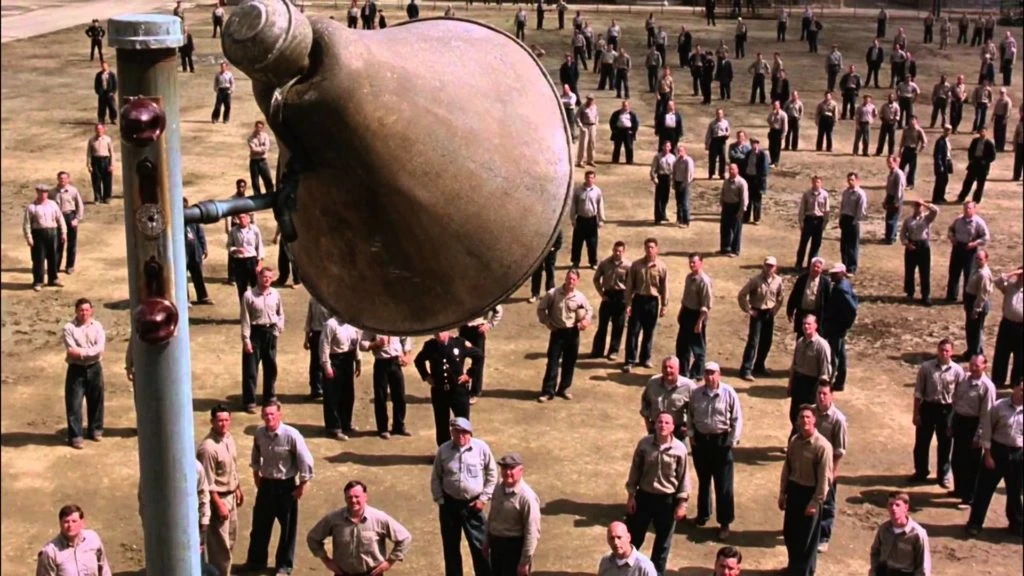
🎵 The Music Scene: A Hidden Moment of Freedom
One of the most powerful and symbolic scenes in the film is when Andy plays the Italian opera over the prison loudspeakers.
Every inmate looks up toward the sky, smiling or closing their eyes — as if breathing for the first time in years.
The music didn’t break the iron bars, but it shattered the invisible chains inside their minds.
That moment became a “window to the sky,” a reminder that beauty still exists and that there’s something within the human spirit no prison can destroy.
This is the heart of the film’s message: Freedom is not about where you are, but about your ability to remain human despite everything.
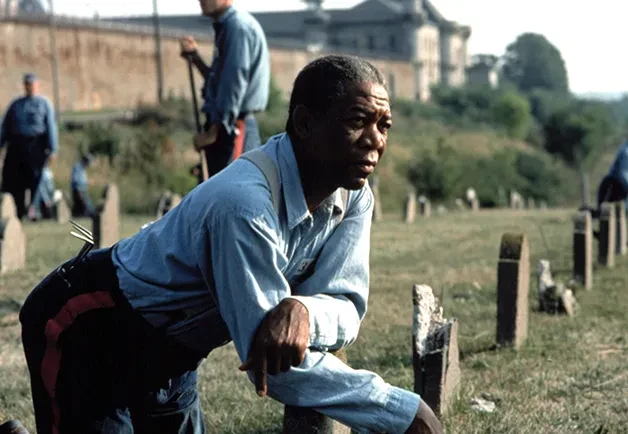
🔓 Red and the Mental Prison
Red, played by the legendary Morgan Freeman, represents the other side of the coin.
After spending most of his life behind bars, he struggles to adjust to life outside.
In one of the film’s most poignant lines, he says:
“I’m an institutional man now.”
This means his mind has been trained — even enslaved — by routine and fear.
The world outside felt like another kind of prison.
And that’s the deeper truth the film quietly whispers:
Not everyone outside is free, and not everyone inside is trapped.
Many live outside the walls but remain imprisoned by their fears, failures, or habits.
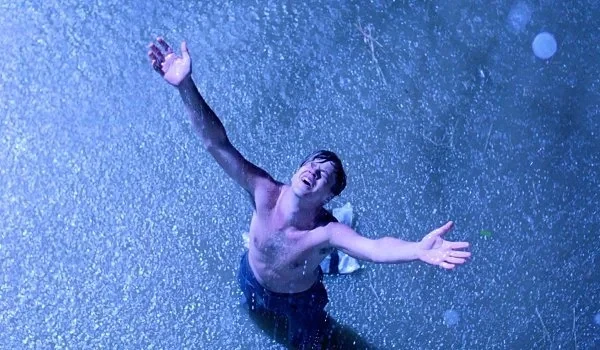
🌧️ Escaping the Prison or Escaping Fear?
Andy’s legendary escape wasn’t just a clever plan or a physical act.
It was the final step of a spiritual and mental liberation that began long before.
He had already freed himself — through learning, hope, and faith.
He educated himself, inspired others, built a library, and gave people purpose.
So the film presents two types of freedom:
Physical liberation — escaping the bars and walls.
Mental liberation — escaping hopelessness, fear, and submission.
And when the two combined, Andy achieved true redemption.
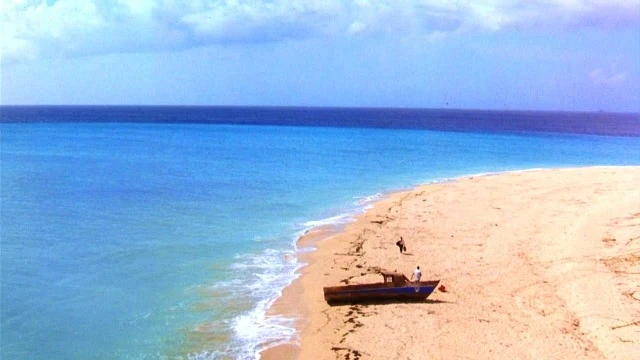
☀️ The Ending: Freedom as a Choice
In the final scene, when Red travels to Zihuatanejo to reunite with Andy, it’s more than a simple reunion — it’s the embodiment of complete freedom.
For the first time, Red has escaped the prison inside his own mind.
And Andy, who began his journey with faith, ends it with peace.
The ending quietly tells us:
“Freedom isn’t about breaking out — it’s about refusing to stay broken within.”
🕊️ Conclusion
The Shawshank Redemption is not just a story about a man escaping from a prison.
It’s a story about every human being fighting to break free from invisible chains — fear, doubt, or despair.
The kind of freedom it teaches is not a gift or a dream — it’s a daily choice:
Will you live as a prisoner of your circumstances, or will you choose to be free no matter how high the walls around you?
And as Red said:
“Hope is a good thing, maybe the best of things, and no good thing ever dies.”
And perhaps Andy’s words remind us why freedom begins within:
“Fear can hold you prisoner. Hope can set you free.”
























